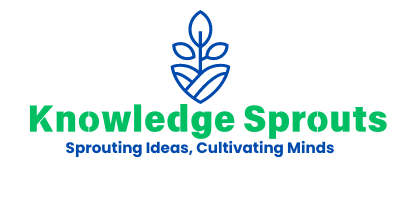Book Appointment Now

Best Study Methods: Proven Techniques for Smarter Learning
Starting with the best study methods can feel confusing, especially if nothing seems to work. The good news? A few simple changes can help you study smarter, remember more, and feel less stressed.
This guide breaks down the most effective, science-backed ways to learn—so you can see real results, even if you’re just starting out.
Key Takeaways
- Active learning beats passive reading. Discuss, teach, and apply what you learn for better retention.
- Use spaced repetition and retrieval practice. Review information regularly and quiz yourself to make knowledge stick.
- Mix up your study sessions. Switch between topics and problem types to strengthen understanding.
- Personalize your approach. Set clear goals, reflect on your progress, and adjust your study techniques as needed.
- Wellness matters. Prioritize sleep, manage stress, and move your body for sharper focus and better results.
Foundations of Effective Studying
If you feel overwhelmed by studying, you’re not alone. Most of us think studying just means reading our notes over and over. But real learning happens when you get involved with the material. This is called active learning.
Active learning means you don’t just read—you do. Talk about what you’re learning with a friend or classmate. Try explaining the ideas out loud, even if it’s just to yourself. Find ways to use what you’ve learned in real life. The more you interact with the material, the more it sticks. These are the best study methods for truly remembering things, not just memorizing for a test.
Metacognition is another powerful tool. It’s a fancy word for thinking about how you learn. Start noticing what actually helps you remember things. Are you zoning out when you highlight? Do you get more out of drawing diagrams, or talking things through?
When you spot these patterns, you can tweak your study techniques. Drop what isn’t working. Do more of what helps. Over time, you’ll build a study routine that actually works for you—not just what everyone else is doing.
Evidence-Based Study Techniques
Spaced Repetition
This method is all about timing. Instead of cramming, you review information at set intervals. You come back to what you learned just as you’re about to forget it. This helps your brain hold onto facts for the long term.
You don’t have to do it all by memory. Apps like Anki or the Leitner System do the scheduling for you. They show you the right flashcards at the right time. It feels easy, but it really works.
Retrieval Practice
Retrieval practice means pulling information out of your memory, not just putting it in. It’s one of the best study methods because it actually strengthens your memory.
You can do this by quizzing yourself or taking practice tests. Don’t just reread notes—try to remember the answer before you look. The more you recall on your own, the deeper it sticks.
Interleaved Practice
Interleaving is about mixing things up. Instead of focusing on one subject for a long time, you switch between topics or types of problems.
This might feel harder at first. But it teaches your brain to tell ideas apart and spot patterns. Alternating topics helps you learn more in less time and makes what you learn easier to use later.
Elaborative Interrogation
This one is simple: ask yourself “why” as you study. Why does this fact matter? Why does this step come next?
Explaining ideas in your own words is powerful. Try to link new facts to things you already know. When you do this, you’re building strong connections in your mind. That makes the information easier to understand and remember.
Structured Study Frameworks
SQ3R Method
The SQ3R method gives you a step-by-step plan for reading. It stands for Survey, Question, Read, Recite, and Review.
First, you survey the chapter. Skim the headings, pictures, and summaries to get the big idea. Next, turn those headings into questions you want to answer as you read. Then, start reading to find the answers.
After reading, recite the answers out loud or write them down from memory. Finally, review by going back over the material and your answers.
This method keeps you active and focused. It helps you understand and remember what you read. You’re not just reading—you’re thinking about what matters.
Cornell Note-Taking System
The Cornell System is all about structure. You divide your page into three sections: cues, notes, and summary.
During class or while reading, write the main notes in the big right section. Use the left column for key terms or questions—these are your cues. At the bottom, after the lesson, write a short summary in your own words.
This style keeps your notes neat and organized. When it’s time to review, you can quickly quiz yourself with the cues. The summary helps you see the big picture. It’s a simple setup, but it makes reviewing so much easier and more effective.
| Related: The Cornell Method: Boost Study Skills + Free Templates
Optimizing the Study Environment
Distraction Management
Your environment matters more than you think. A cluttered desk or a noisy room can make it almost impossible to focus. Try to find a quiet space just for studying.
Put your phone out of reach or use an app to block distractions for a set time. Even small changes—like closing extra tabs or letting your family know you need quiet—can make a big difference. The goal is to create a space where your mind can focus on learning and nothing else.
Time Management
Studying doesn’t have to mean hours of non-stop work. In fact, your brain does better with breaks. One of the best study methods is the Pomodoro Technique: work for 25 minutes, then take a 5-minute break.
After four rounds, give yourself a longer break. This keeps your energy up and stops burnout before it starts. Set a timer and treat your breaks as a reward. You’ll be surprised at how much more you can get done.
Resource Utilization
Don’t be afraid to use tools that make studying easier. There are so many great apps and websites out there. You can organize your notes with apps like Notion or OneNote. Quiz yourself with flashcard apps like Anki.
Set reminders, track your time, or block websites with simple browser extensions. These resources can save you time and help you build better study habits. Find what works for you and use it to your advantage.
| Related: Best Memorization Techniques for Students Revealed
Personalizing Study Approaches
Learning Styles
Everyone has their own way of learning, and it’s okay to notice what feels best for you. Maybe you like seeing things written out, hearing them explained, or moving your hands as you work. But don’t get too hung up on learning styles alone.
What matters most is using study techniques that actually help you remember and understand—like active learning, retrieval practice, or spaced repetition. Try different methods of study until you find the mix that helps things “click.” The best study methods usually combine your preferences with proven strategies.
Goal Setting
Wandering through your notes without a plan can make studying feel endless and stressful. Set a clear, simple goal for each session. Maybe it’s “finish two chapters,” “master this formula,” or “quiz myself on all the key terms.”
When you know what you want to accomplish, it’s easier to stay focused and motivated. Check off your goals as you go. It feels good, and you’ll see real progress with every step.
Reflective Practices
Don’t be afraid to step back and ask, “Is this working?” Reflection is key. Take a few minutes after each study session to think about what helped and what didn’t. If you’re not getting results, try something different next time.
Maybe switch up your environment, shorten your sessions, or test a new note-taking style. Over time, this habit of reflection and adjustment will help you build your own set of effective study habits—ones that actually work for you. That’s how real improvement happens.

Integrating Wellness into Study Habits
Sleep and Nutrition
Good studying isn’t just about books and notes—it starts with your body. Sleep gives your brain time to process what you’ve learned. Skipping rest might feel productive, but it actually makes it harder to remember anything.
The same goes for food. Eating regular, balanced meals keeps your energy and focus up. So if you want to get the most from the best study methods, don’t forget to fuel and rest your body as well as your mind.
Stress Management
Studying can be stressful, and that stress can make it hard to concentrate or even start. Try adding small moments of mindfulness to your routine. Take deep breaths, stretch, or close your eyes for a minute.
Short breaks like this help your mind reset. If you feel overwhelmed, remember it’s okay to pause and regroup. Managing stress isn’t a luxury—it’s part of learning how to study effectively and making progress that lasts.
Physical Activity
Moving your body helps your brain, too. Even a short walk or a few minutes of stretching can boost your concentration and mood. Exercise increases blood flow and sharpens your thinking.
You don’t need a full workout; just get up and move around between study sessions. When your body feels better, your mind works better. Physical activity is an easy but often overlooked study technique that can make a big difference.
Conclusion
Blending the right study methods with healthy habits makes all the difference. Keep experimenting, reflect on what helps, and don’t be afraid to change things up. Progress comes with every small step. You’re on your way!




